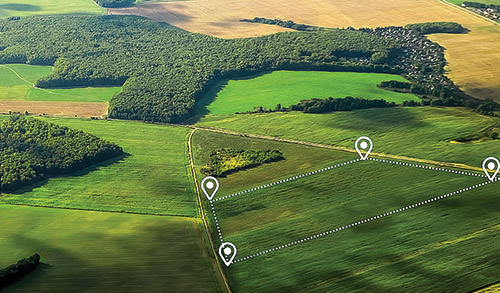In Focus: The Challenge of Finding Improved Land
Because improved land is hard to come by, more investors and developers are evaluating true greenfield opportunities in far outer rings of major markets.
Q4 2021

Owners with any inclination of selling have already done so, or their land is under contract. For the owners still holding onto their land, the question is, what will entice them to finally sell? Buyers would be wrong to assume it’s all about price. The market has reached a remarkable level of efficiency when it comes to pricing, and developers know exactly how much they’re willing to offer for a piece of land based on construction costs and lease rates.
Many sellers, driven by concerns about capital gains taxes, have put land under contract stipulating a closing by year-end. Though many buyers have agreed, it will be interesting to see how many are truly able to close. If those deals fall through, opportunities might arise in first quarter 2022. Successful developers who are closely attuned to the market will be able to strike quickly and capitalize on these unclosed deals.
Mirroring Residential Market
Current market dynamics for commercial land acquisitions are remarkably similar to the residential single-family home market, where a lack of supply has resulted in skyrocketing price growth in most markets. The same has happened with land.
Competition for land zoned for industrial/warehouse development is particularly intense. In the residential market, inventory is lower than it’s ever been. Homeowners, even if they want to take advantage of the high values by selling, are concerned they won’t be able to find another home comparable or better than what they have now without overpaying.
In the current land market, owners feel the same way. While land values might be tempting, owners are worried they won’t be able to find a better investment to fulfill 1031 exchange requirements, causing them to pump the brakes on selling.
Creating Opportunities
For seasoned developers, current market conditions are creating more opportunities for discussions around joint ventures as a way to get owners on board with developing their property. For some owners, this eliminates concerns about selling land and not maximizing potential income.
Because improved land is hard to come by, more land investors and developers are evaluating true greenfield opportunities in far outer rings of major markets. For example, in Dallas-Fort Worth, investors and developers are looking as far south as Midlothian, nearly 30 miles away from either city.
Considerations for greenfield acquisition are quite different than improved land. Notably, buyers must factor in additional risk related to timing and cost of utilities and infrastructure. Timing adds a lot of risk because no one knows what the market will be like by the time the land is ready for vertical development. As the time horizon for development extends, the accuracy of market predictions diminishes.
New distribution markets are emerging as tenant demand, available sites, and rental rates continue to push boundaries. The key for all parties will be knowing how far and in which direction to push the development envelope. Market-savvy, pioneering developers will be the most likely to be rewarded, while exploratory investors might be left waiting for the next cycle.
Project Announcements
Eurofins Lancaster Laboratories Expands Lancaster County, Pennsylvania, Research Operations
01/03/2026
Creative 3D Technologies Expands Cedar Park, Texas, Headquarters-Manufacturing Operations
01/03/2026
Valerie Health Plans Chattanooga, Tennessee, Operations
01/02/2026
Samsung Biologics Plans Rockville, Maryland, Manufacturing Operations
12/31/2025
Kraken Technologies Limited Plans New York City Headquarters Operations
12/29/2025
Lupin Expands Coral Springs, Florida, Operations
12/29/2025
Most Read
-
The Workforce Bottleneck in America’s Manufacturing Revival
Q4 2025
-
Rethinking Local Governments Through Consolidation and Choice
Q3 2025
-
Data Centers in 2025: When Power Became the Gatekeeper
Q4 2025
-
Tariff Shockwaves Hit the Industrial Sector
Q4 2025
-
Investors Seek Shelter in Food-Focused Real Estate
Q3 2025
-
The Permit Puzzle and the Path to Groundbreaking
Q3 2025
-
Supply Chain Whiplash Reshapes CRE
Q3 2025